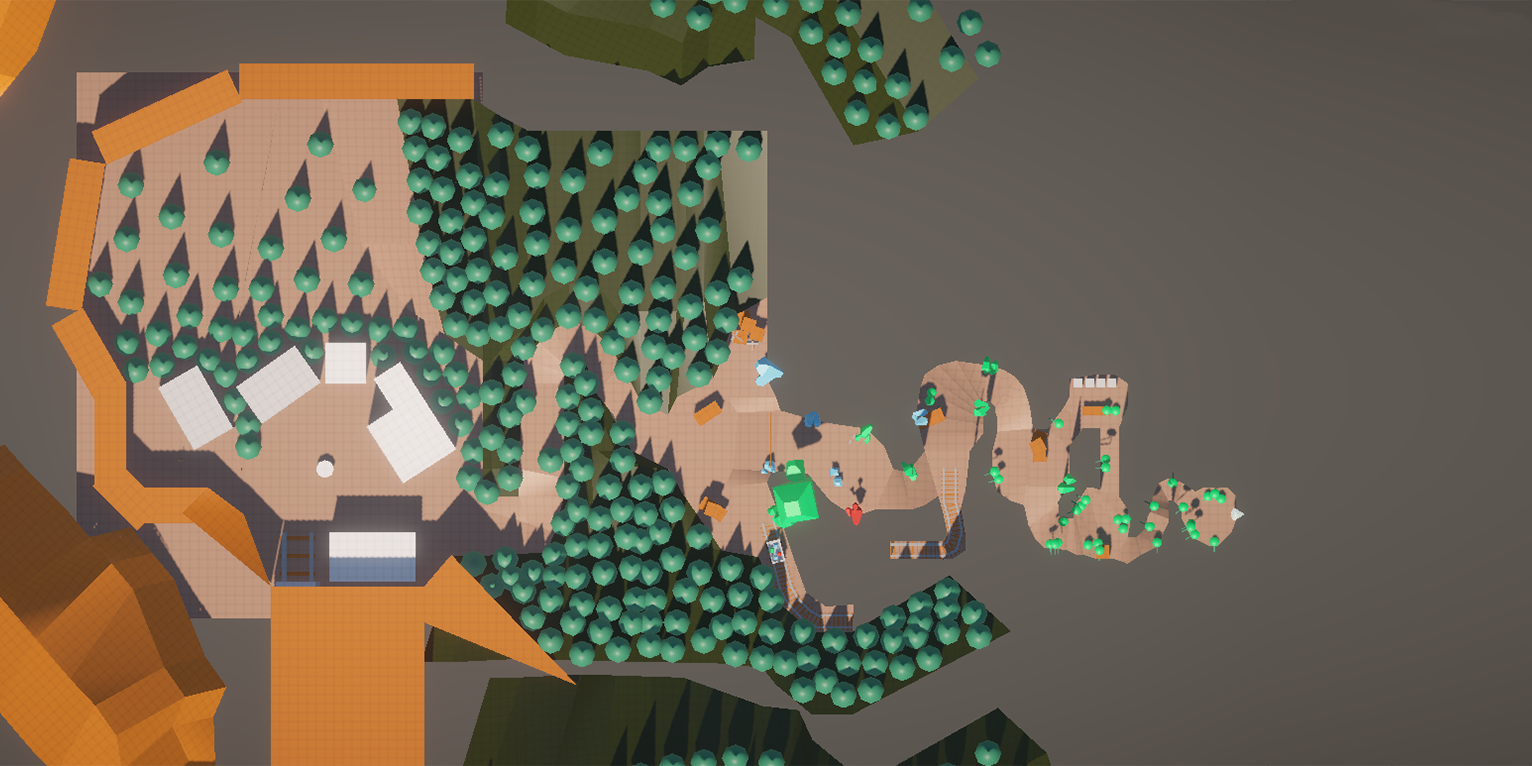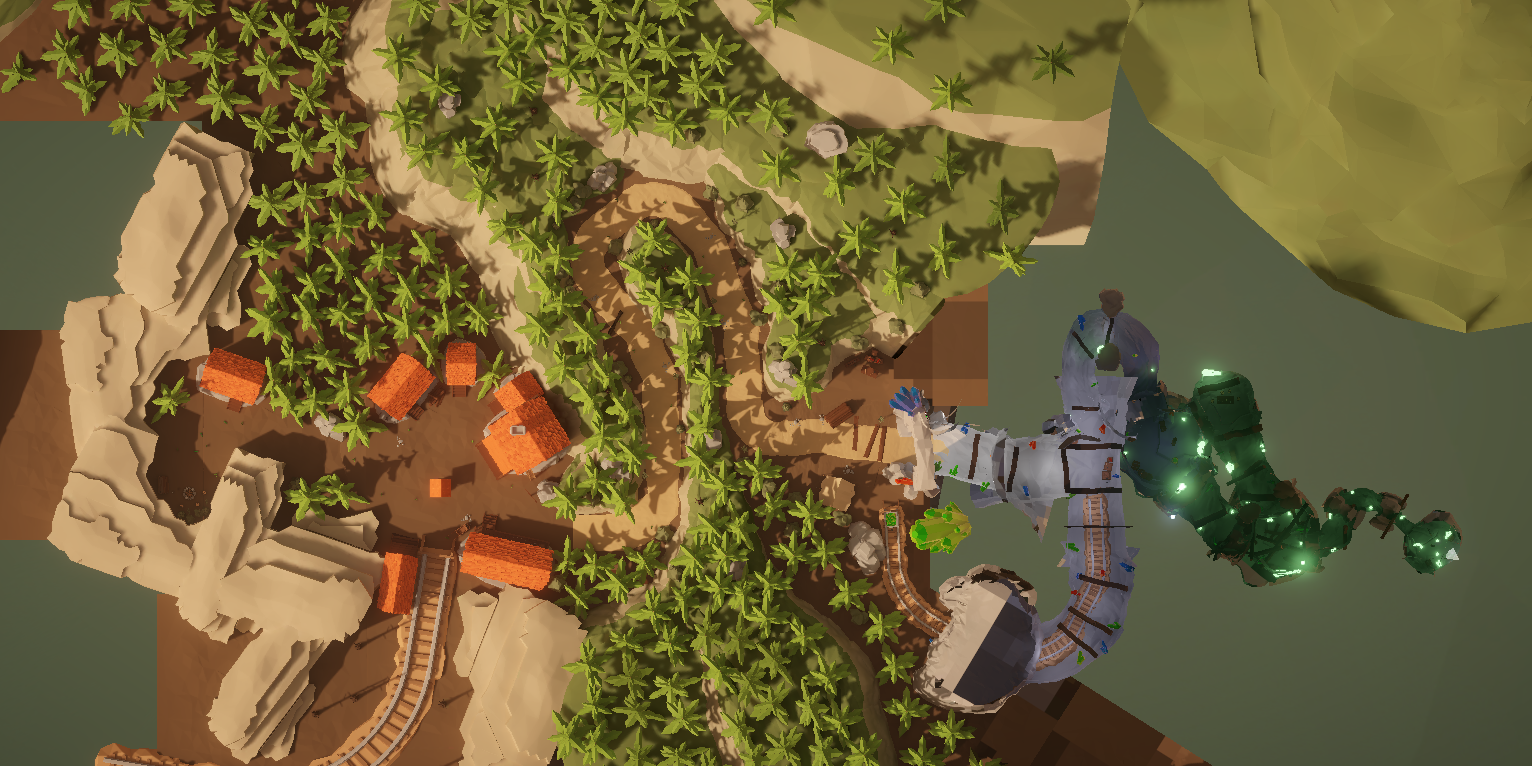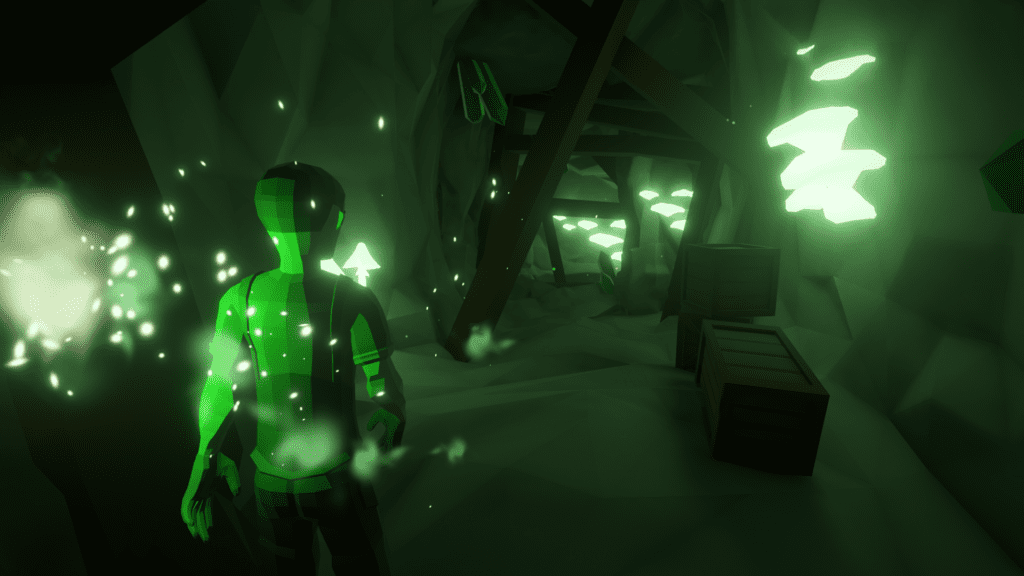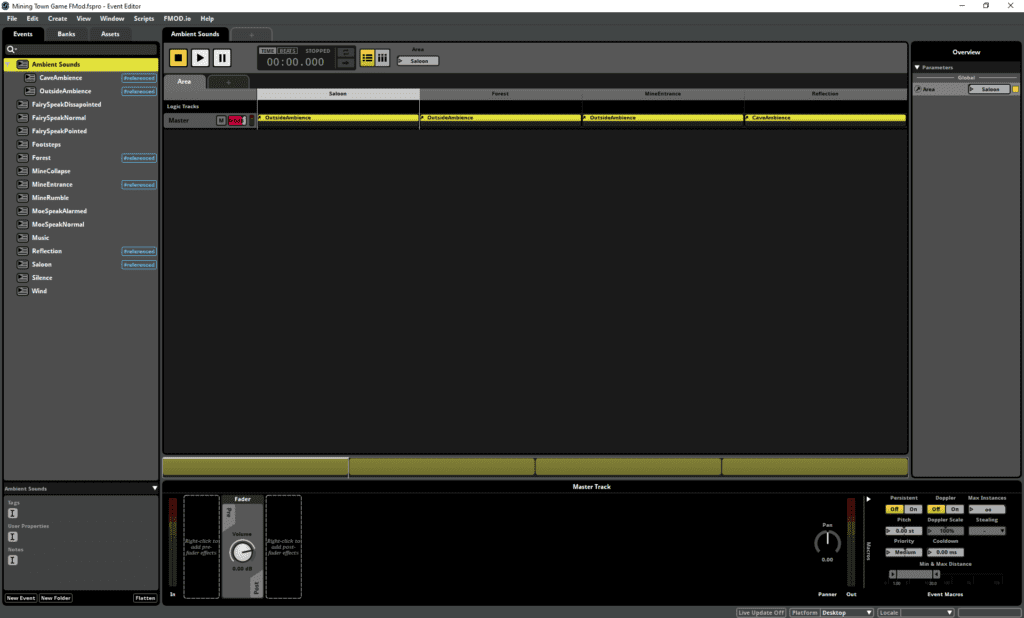Fairy at the Bottom of the Bottle
Team: Group of 4
Role: Game and Level Designer, Programmer
Timeline: 5 Months
DESCRIPTION
Fairy at the Bottom of the Bottle is a narrative game project that I worked on in a team of four over five months. I was the team’s Game Designer, Level Designer, and Programmer, and also tackled audio and level art implementation. You play as Moe, a disheveled Miner who has a nightmare about a mining accident he caused, guided by a tricky Fairy who doesn’t have his best intentions in mind.
TOOLS
- Unity
- Probuilder
- Visual Studio (C#)
- FMOD
JUMP TO SECTION
PROJECT SHOWCASE
You can also play Fairy at the Bottom of the Bottle on itch.io:
LEVEL DESIGN
USING LEVEL DESIGN TO CONVEY NARRATIVE INTENSITY
INTRODUCTION
Fairy at the Bottom of the Bottle is primarily a narrative game, and therefore the level design had to support the game’s story. Because of this, scale, lighting, colour, elevation, and adaptive music were all used to boost narrative beats, heightening the impact of intense story points and enhancing the overall experience.
Click here to view the full level design document I created for this project.




GREYBOXING AND
DIALOGUE SPACING
Dialogue spacing was important to get right in the final level. If the level was too small then dialogue would have to be crammed together, making the player read walls of text. If the level was too large, the player would become bored moving between dialogue, dragging out the experience.
To get this right, I first created a greybox of the level and timed the length between dialogue boxes. The spacing felt too cramped in the first iteration, and so the final level was made ~50% longer.
SIZING OF PLAY AREAS
Throughout the story the main character Moe slowly realizes that they’re reliving in a nightmare a past accident they caused, making them feel more and more trapped.
To convey this in level design, locations and paths were made more and more cramped as the player progressed, reflecting Moe’s increasing unease.
The mining town at the start of the level is roughly four times larger than the diamond room at the end.
LIGHTING AND COLOURS
Colours and lighting were also used to convey Moe’s emotional state and the Fairy’s influence over his nightmare.
At the beginning of the level, the town square was made to be orange and dusty, reflecting Moe’s unawareness of the situation.
Saturated colours and post-processing were used at the cave entrance, reflecting Moe’s nostalgia and the Fairy’s desire to draw him inside.
As Moe heads deeper into the cave, it becomes darker and more desaturated, reflecting his guilt and fear.
Additionally, support beams become crooked, red and blue gems are swapped with green ones, and glowing green mushrooms are introduced to highlight the Fairy’s vanishing façade.
ELEVATION
Elevation is also used to support the narrative. Moe begins without memory of where he or the key to his house is, so a low elevation is used to represent this lack of control.
As Moe remembers where he is and begins to trust the Fairy, the level rises in elevation. This peaks at the cave entrance, where Moe feels most at ease with his environment. When Moe remembers the accident he caused in the mines, and as the Fairy removes her friendly façade, the cave winds lower and lower. This reflects his increasing anxiety and regret, which peaks at the end of the level where the elevation is lowest.
ADAPTIVE MUSIC
Adaptive music and ambient sound effects were used to highlight the intensity of certain story beats. Multiple tracks were used, with instruments fading in and out to change the emotion of an area.
These tracks were implemented using trigger boxes that the player passes through as they play.
This table outlines the music and ambient effects that play throughout the game. Screenshots of audio implementation within FMOD are also included.
TAKE AWAYS
This project gave me new insight on how to design a level specifically to support a narrative. My previous experience was mostly focused on teaching and supporting mechanics through level design, however I found a lot of the same principles could be applied to the problem-solving process.














